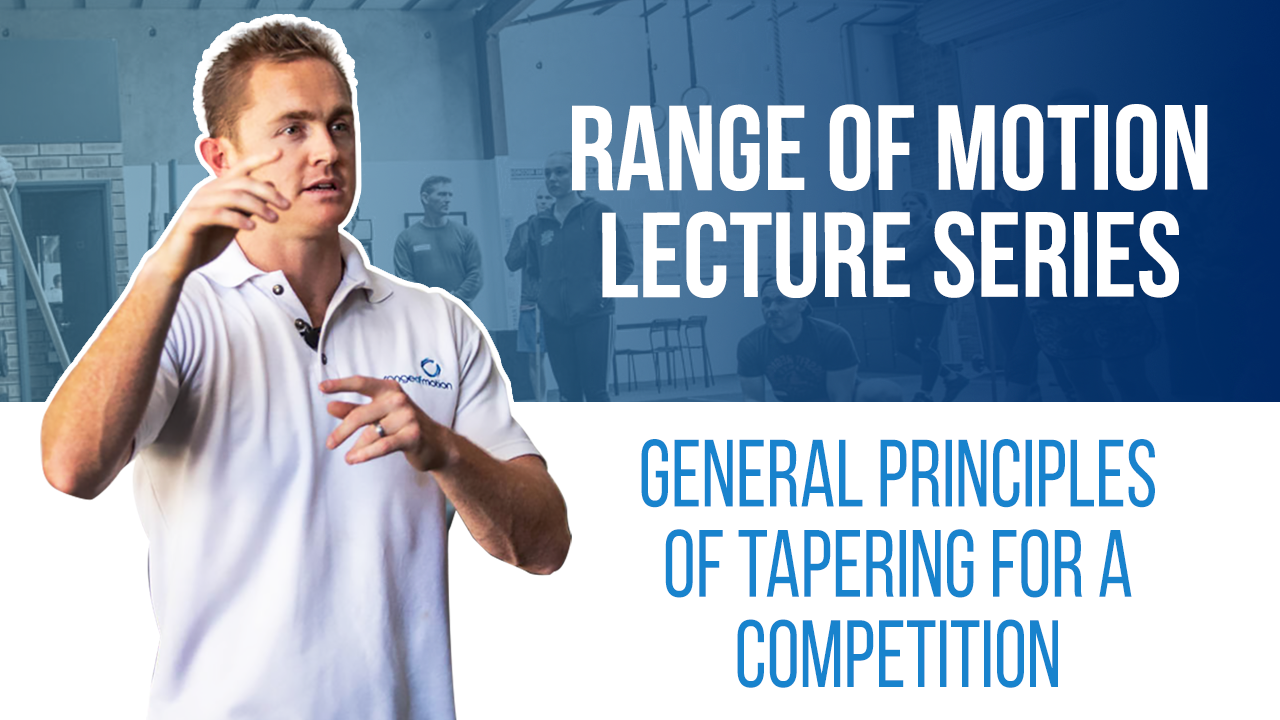Transcribed from video:
– General principles. So, there are five main things that we can look at here, when it comes to putting together a taper. Firstly, reduce the neuromuscular effect of the training sessions. What’s one way that we can measure the neuromuscular effect of a training session? We can use that
– Muscle scale
– neuromuscular fatigue rating scale. One would be really easy. A swim, recovery, a long walk. Four would be something super tough. Maybe a lot of Strongman training, which is really, it fatigues. You guys can feel your nervous systems feel like they’ve done something now. As well as your muscles and bones and joints. So, reduce the neuromuscular effect of the training session, so it’s not breaking you down. Reduce the volume of training, so do less. Sounds familiar, this is just like you would in a day load. So, less training. Hold on to the intensity though. Now, not intensity to the point where you’re smashing your body and you’re getting this neuromuscular fatigue, ’cause that’s not what we’re looking for. More in terms of you being able to do the fast, sharp, snappy stuff. Fast burpees, fast rowing, sprints. The stuff that doesn’t smash your body too much but you can still keep that cardiorespiratory endurance up. We talked about cramming skill development. You can get a lot of skill development in a very short amount of time, just by practising . Remember, we talked in programming yesterday, about trainable weaknesses versus practicable weaknesses? We can work on the practicable stuff. Changes occur in the learner as a process of practise and learning, and that happens pretty quickly. Again, as you guys saw from what we did today.





